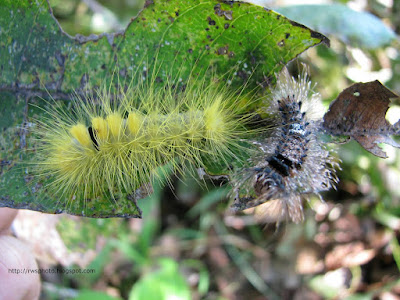Black Crow
Photo of a black crow with red eyes perched on a papaya tree. Look like the crow is possessed but it's not. The bird could also be a Common Raven aiming for the ripen papaya fruit.
 Above: cropped photo of a black crow.
Above: cropped photo of a black crow.
 Above: Photo taken at house's back yard with 12x digital zoom.
The true crows are large passerine birds that form the genus Corvus in the family Corvidae. Ranging in size from the relatively small pigeon-sized jackdaws (Eurasian and Daurian) to the Common Raven of the Holarctic region and Thick-billed Raven of the highlands of Ethiopia, the 40 or so members of this genus occur on all temperate continents (except South America) and several offshore and oceanic islands (including Hawaii). In the United States, the word "crow" is used to refer to the American Crow. The crow genus makes up a third of the species in the Corvidae family. Other corvids include rooks and jays. Crows appear to have evolved in Asia from the corvid stock, which had evolved in Australia. A group of crows is called a "murder," though this term usually appears in poetry or similar literature rather than ordinary usage.
Related posts:
* Borneo Frogmouth Owll
* Freak papaya from Borneo
Above: Photo taken at house's back yard with 12x digital zoom.
The true crows are large passerine birds that form the genus Corvus in the family Corvidae. Ranging in size from the relatively small pigeon-sized jackdaws (Eurasian and Daurian) to the Common Raven of the Holarctic region and Thick-billed Raven of the highlands of Ethiopia, the 40 or so members of this genus occur on all temperate continents (except South America) and several offshore and oceanic islands (including Hawaii). In the United States, the word "crow" is used to refer to the American Crow. The crow genus makes up a third of the species in the Corvidae family. Other corvids include rooks and jays. Crows appear to have evolved in Asia from the corvid stock, which had evolved in Australia. A group of crows is called a "murder," though this term usually appears in poetry or similar literature rather than ordinary usage.
Related posts:
* Borneo Frogmouth Owll
* Freak papaya from Borneo





















